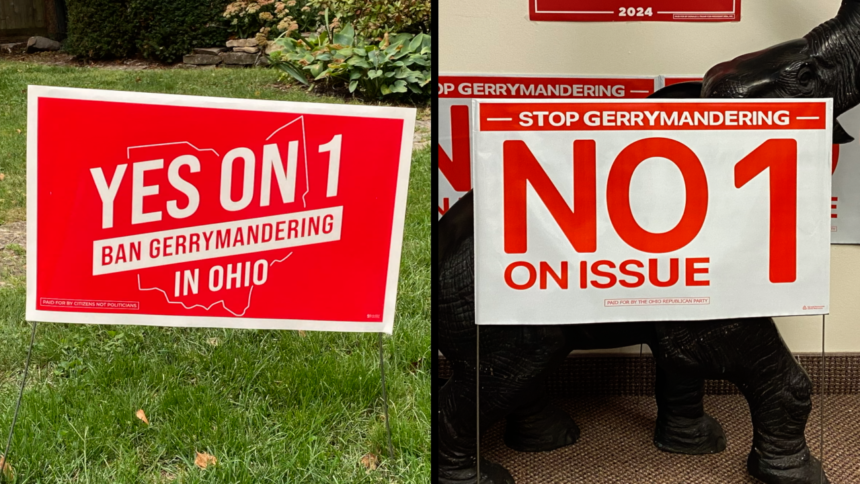In November 2024, Ohio voters faced a pivotal decision with Issue 1 Ohio, a proposed constitutional amendment aimed at overhauling the state’s redistricting process. The initiative sought to transition from a politician-led system to a citizen-led commission, intending to address longstanding concerns over gerrymandering. Despite its ambitious goals, Issue 1 Ohio was ultimately rejected by a majority of Ohioans. This article delves into the intricacies of Issue 1 Ohio, examining its objectives, the arguments from both supporters and opponents, and the implications of its defeat.
Background: The Genesis of Issue 1 Ohio
Ohio’s redistricting process has been a subject of contention for years. The existing system, established in 2015, entrusts the Ohio Redistricting Commission—a seven-member panel comprising elected officials—with the responsibility of drawing legislative and congressional districts. Critics argue that this structure allows for partisan gerrymandering, where district boundaries are manipulated to favor a particular political party. In response to these concerns, a bipartisan coalition named Citizens Not Politicians spearheaded the campaign for Issue 1 Ohio. Their proposal aimed to establish a 15-member Ohio Citizens Redistricting Commission, composed of everyday citizens rather than politicians, to ensure fairer and more transparent district mapping.
The Provisions of Issue 1 Ohio
Issue 1 Ohio proposed the creation of the Ohio Citizens Redistricting Commission, a body designed to be independent of political influence. The commission would consist of five Republicans, five Democrats, and five individuals unaffiliated with either major party. Members would be selected through a rigorous screening process conducted by a panel of retired judges, ensuring a balanced and impartial composition. The commission’s mandate included:
Banning Partisan Gerrymandering: Explicitly prohibiting the drawing of districts that favor or disfavor any political party.
Ensuring Proportional Representation: Aligning the proportion of districts with the statewide preferences of Ohio voters, based on recent election data.
Maintaining Communities of Interest: Keeping communities with shared interests intact to ensure effective representation.
Transparency and Public Participation: Mandating public hearings and open meetings to foster transparency and allow for citizen input throughout the redistricting process.
These provisions were designed to create a more equitable redistricting process, reducing the potential for partisan manipulation and enhancing public trust in electoral outcomes.
Support for Issue 1
Proponents of Issue 1 Ohio argued that the amendment was essential for restoring integrity to Ohio’s electoral system. They highlighted the following points:
Ending Politician Control: By removing politicians from the redistricting process, the amendment aimed to eliminate conflicts of interest and reduce the likelihood of gerrymandering.
Reflecting Voter Preferences: Aligning district boundaries with the actual voting patterns of Ohioans would lead to fairer representation in the state legislature and Congress.
Enhancing Accountability: A citizen-led commission operating transparently would be more accountable to the public, fostering greater trust in the political system.
Broad-Based Support: The initiative garnered endorsements from a diverse array of organizations, including the League of Women Voters of Ohio, Common Cause Ohio, and various civil rights groups, underscoring its nonpartisan appeal.
Former Ohio Supreme Court Chief Justice Maureen O’Connor, a prominent supporter, emphasized that Issue 1 Ohio would “ban partisan gerrymandering and prohibit the use of redistricting plans that favor one political party and disfavor others.”
Opposition to Issue 1
Despite its intentions, Issue 1 Ohio faced significant opposition from various quarters. Critics raised several concerns:
Lack of Accountability: Opponents argued that an unelected commission would be unaccountable to voters, potentially leading to decisions that do not reflect the will of the populace.
Potential for Bias: Some contended that the selection process for commission members could still be susceptible to partisan influences, undermining the goal of impartiality.
Complexity and Bureaucracy: The proposed system was viewed by some as overly complex, creating a new layer of bureaucracy that could complicate the redistricting process.
Risk of Legal Challenges: There were concerns that the new system could lead to increased litigation, as stakeholders might contest the commission’s decisions in court.
Ohio Senate President Matt Huffman expressed apprehension that Issue 1 Ohio would establish “an unelected, unaccountable fourth branch of government,” potentially eroding democratic principles.
The Ballot Language Controversy
A significant point of contention during the Issue 1 Ohio campaign was the language used on the ballot. Supporters of the amendment accused the Ohio Ballot Board of crafting misleading and biased language that misrepresented the proposal’s intent. The approved ballot language suggested that the new commission would be “required to gerrymander” district boundaries, a characterization that proponents vehemently disputed. They argued that this phrasing confused voters and misled them about the amendment’s true purpose. Despite legal challenges, the Ohio Supreme Court upheld the ballot language, a decision that supporters of Issue 1 believe contributed to its defeat.
The Outcome and Its Implications
On Election Day, Issue 1 was rejected by approximately 53.7% of Ohio voters, with 46.3% in favor. The defeat of the amendment means that the current politician-led redistricting process remains in place. This outcome has significant implications for the state’s political landscape:
Continued Partisan Influence: The existing system allows elected officials to have substantial control over district boundaries,






